Reviews
David Modigliani
USA, 2008
Credits
Review by Victoria Large
Posted on 25 April 2008
Source DVD screener
Categories The 2008 Independent Film Festival of Boston
In director David Modigliani’s new documentary Crawford, about the titular small town in Texas where George W. Bush moved in 2000 during his bid for the American presidency, the local pastor Michael Murphy explains that just before the arrival of the high-profile new resident, the members of his church had been praying for a miracle. Murphy appears convinced that the miracle has been granted in the form of the onetime Texas governor’s appearance on the scene, but Modigliani’s film reveals that the far-reaching effects of Bush’s decision to call Crawford home fall something short of miraculous. Yet thankfully, Crawford avoids becoming a simple anti-Bush tract or skewering of Red State America, offering a nuanced portrait of a community coping with being thrust into the limelight, and, as the U.S. grows increasingly divided over Bush’s presidency, into the eye of an entire nation’s ideological storm.
Bush is more a specter that haunts the film than a character in it, breezing in and out of the town in a way that even his supporters recognize as a bit exploitative, or at least irritating. We see him glad-handing locals, cutting cedar logs, and carrying around his dog, but everything is a photo op rather than a genuine homecoming, which is really one of the film’s main points. As high school history teacher Misti Turbeville - a woman whose enthusiasm for debate and critical thought is truly refreshing - suggests, Bush’s move to her town fills a public relations need that the Texas governor’s mansion could not, helping him to cultivate a down-home image that the media is only too happy to perpetuate. The locals observe that every news station chooses the same spot from which to broadcast on location in Crawford: in front of a broken-down shed and a bale of hay near the high school football field, an obscure and misleading image that reduces the town to a vague western stereotype.
It’s up to Modigliani to give us a fuller view. In addition to meeting Bush supporters like Pastor Murphy, we meet W. Leon Smith, publisher of the Crawford-based newspaper The Lone Star Iconoclast, which lost the bulk of its readership by endorsing John Kerry for president in 2004. We visit the Crawford Coffee Station, a flag-draped local eatery crowded by life-sized cardboard cut-outs of members of the Bush family, but we also see the Crawford Peace House, an activist center where Turbeville takes her history class on a controversial field trip. We hear a high school student insist that not everyone in Crawford is a cowboy, and of course he’s right, though we do meet a few of them along the way too.
Crawford has its moments of wry humor, such as the disconcerting sight of horse breaker Ricky Smith casually talking on his cell phone while cracking his whip at a galloping equine, or local souvenir shop owner Norma Nelson-Crow extolling Bush because he isn’t “plastic‗while at the same time admiring a talking Dubya doll made from… well, you guessed it. But Modigliani is never smug about the locals, and not one of the townspeople emerges as one-dimensional.
From the outset there is a great temptation to read the town of Crawford as a microcosm - a divided country in miniature - and the film does work on that level. Among the most dramatic scenes captured are of the competing lines of protestors who gather in Crawford with the arrival of peace activist Cindy Sheehan. Shouts of “No more war!†are answered by cries of “All troops volunteer!†and it is equal parts galvanizing and distressing. Here is the kind of passion that Americans should have about their politics; here is freedom of speech in action. And yet - how can the two sides ever reach any accord, or have a dialogue at all, if they only try to drown one another out?
I wanted, I think, to read Crawford as an optimistic film that celebrates America’s ability to accommodate a variety of viewpoints, one that reminds us that there is dissent, and a potential for dialogue, even in a place like Crawford. But by the end I had realized that any film that sets out to capture a moment in time - particularly this moment in time - needs to be more bruising than that. As the individual, human stories that make up this documentary reach their conclusions - some of them with low-key bemusement, others with sad poignancy - there is indeed hope, but also trepidation, and most of all, weariness. One resident mildly observes that the novelty has worn off, but it’s more than that. After years of battles, on the streets and on the nightly news, Crawford is a sadder place, but perhaps a wiser one. Here again emerges the temptation to see the state of a nation reflected in the story of one little town.
More The 2008 Independent Film Festival of Boston
-
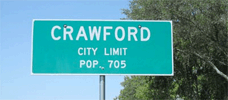
Crawford
2008 -

Vexille
2007 -

American Teen
2008 -

Mister Lonely
2007 -

Intimidad
2008 -
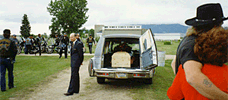
Meadowlark
2008 -

Second Skin
2008 -
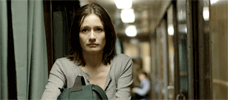
Transsiberian
2008 -

The Linguists
2008 -

Big Man Japan
2007 -
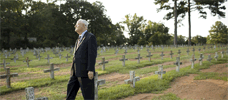
At the Death House Door
2008 -
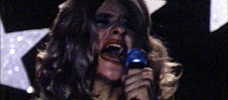
The Beaver Trilogy
2000 -
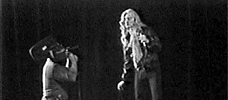
The Beaver Trilogy
2000 -
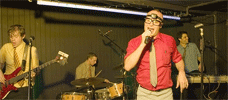
Nerdcore Rising
2008 -

Goliath
2008 -

The Tracey Fragments
2007 -

Saviours
2008 -

Medicine for Melancholy
2008 -

Severed Ways
2007 -

Not Your Typical Bigfoot Movie
2008 -

Not Your Typical Bigfoot Movie
2008 -

Jump!
2007 -

Encounters at the End of the World
2007
We don’t do comments anymore, but you may contact us here or find us on Twitter or Facebook.



